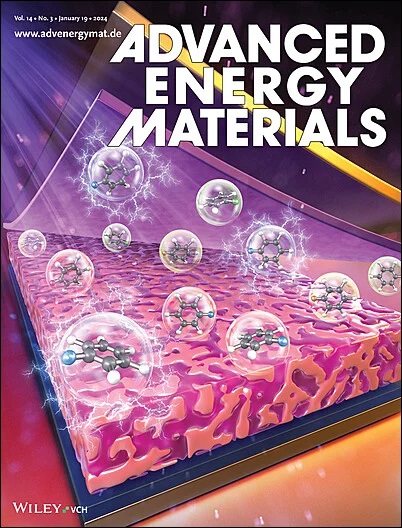Tuning Cation (Dis)Order in Cr‐Based Li‐Excess Oxide Cathode Materials to Improve Li+ Transport Properties
IF 24.4
1区 材料科学
Q1 CHEMISTRY, PHYSICAL
引用次数: 0
Abstract
Li‐excess disordered rocksalts (DRXs) hold promise as next‐generation cathodes for Li‐ion batteries due to their high capacity and energy density, along with the potential to eliminate the need for Co and Ni. However, due to their low Li调整Cr基Li -过量氧化物正极材料中的阳离子(非)顺序以改善Li+输运性能
锂过量无序岩盐(DRXs)由于其高容量和能量密度,以及消除对Co和Ni需求的潜力,有望成为锂离子电池的下一代阴极。然而,由于drx具有较低的Li+扩散率,因此需要将其粉碎成纳米颗粒才能获得高性能。本文展示了一种克服这一限制的新策略,包括设计合成的部分无序氧化物,其结构介于有序层状和完全无序之间,表现出不同程度的局部(无序)有序。这种独特的结构激活了新的Li+扩散通道,改善了渗透和运输性能。这种策略允许大量的Li+通过高可逆的Cr3+/6+和O氧化还原进入具有大微米级颗粒的材料中,产生286 mAh g−1 (881 Wh kg−1)的首次放电容量。用多种金属的混合物取代Ti进一步改善了Li+的渗透网络,这似乎通过晶格畸变局部降低了迁移屏障。适当调整化学成分,特别是空d轨道金属的含量,是控制无序程度和减轻循环时电压衰减和迟滞增长的关键因素。
本文章由计算机程序翻译,如有差异,请以英文原文为准。
求助全文
约1分钟内获得全文
求助全文
来源期刊

Advanced Energy Materials
CHEMISTRY, PHYSICAL-ENERGY & FUELS
CiteScore
41.90
自引率
4.00%
发文量
889
审稿时长
1.4 months
期刊介绍:
Established in 2011, Advanced Energy Materials is an international, interdisciplinary, English-language journal that focuses on materials used in energy harvesting, conversion, and storage. It is regarded as a top-quality journal alongside Advanced Materials, Advanced Functional Materials, and Small.
With a 2022 Impact Factor of 27.8, Advanced Energy Materials is considered a prime source for the best energy-related research. The journal covers a wide range of topics in energy-related research, including organic and inorganic photovoltaics, batteries and supercapacitors, fuel cells, hydrogen generation and storage, thermoelectrics, water splitting and photocatalysis, solar fuels and thermosolar power, magnetocalorics, and piezoelectronics.
The readership of Advanced Energy Materials includes materials scientists, chemists, physicists, and engineers in both academia and industry. The journal is indexed in various databases and collections, such as Advanced Technologies & Aerospace Database, FIZ Karlsruhe, INSPEC (IET), Science Citation Index Expanded, Technology Collection, and Web of Science, among others.
 求助内容:
求助内容: 应助结果提醒方式:
应助结果提醒方式:


